Mary Magdalene and Jesus lived at Capernaum
The Home of Jesus
Mary Magdalene lived at Migdal and Jesus lived at Capernaum. He moved his centre of operations there after the 40 days he spent in the desert after his baptism by John the Baptist. This is very clear in St. Mark's gospel.
Mark wrote his gospel about 67AD, he knew Jesus personally and he founded the Coptic Church in Egypt around 50AD. It's beliefs reflect early Christianity more authentically than the Roman church, proclaimed by Constantine in the early fourth century.
Jesus started preaching in the synagogue at Capernaum. If you visit this small town today, that began its life as a row of fisherman's huts alongside the Sea of Galilee, you will be amazed to see the remains a huge white synagogue with pillars and carvings -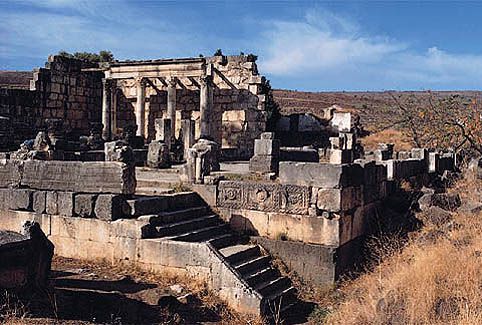
but this was not where Jesus preached. This was built in the Byzantine period, late 4th century. Where then was the original synagogue? The archeologists, taking a terrific gamble that people built, generally, synagogues on the ruins of old ones, cut a trench and dug down yet further - and there was revealed the remains of a first century synagogue in black basalt.
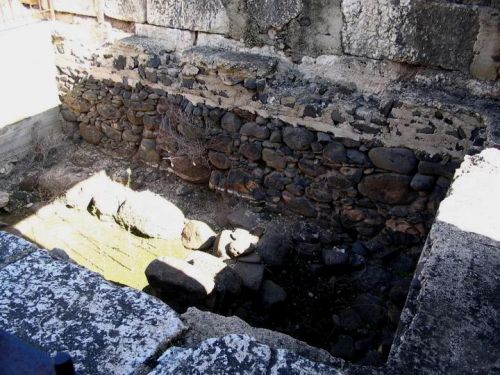
A site called www.bibarch.com/ArchaeologicalSites/Capernaum.htm gives us a chronology - the synagogue was built in 20AD and Jesus preached there in 27AD. If this is true, then Jesus spoke there, before he was baptised by John the Baptist and before he "started his ministry." Jesus was part of a circle of friends in the district that included Mary Magdalene.
There lived at Capernaum a Roman soldier, a centurian, called Petronius. Roman military personnel were stationed at Capernaum under the command of a centurion. Recent excavations indicate that a military garrison was quartered east of the town. These troops enjoyed a complete suite of baths and excellent facilities. This would have been the residence of the centurion who built the synagogue in which Jesus taught (Matt 8:1-13; Luke 7:5). This garrison served Herod Antipas, the governor of Galilee, under Roman authority.
Jesus did much healing at Capernaum, and his reputation as a healer grew rapidly - he was often mobbed. That's one of the reasons he appointed the disciples there, especially John and James, the sons of Zebedee, Philip from Bethsaida, and Andrew and Peter, to help him in his mission, but also to act as bodyguards. On one occasion the crowds were so great Jesus left them on the shore and preached from a boat out on the water.
Capernaum was situated not far from the great Roman road between Damascus and Cesarea Maritime (the home of Pontius Pilate.) 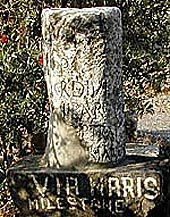 The road was called the Via Maris and a milestone still exists. Near the milestone was a toll gate. Here worked, collecting tolls and other taxes for the Romans, Matthew, who became a disciple of Jesus. They were friends. There's a story in the Bible that Matthew helped the disciples as regards paying their taxes. Sometimes the hypocritcally-pious Pharisees were shocked that Jesus was drinking and merry-making with Matthew and his friends in the evenings. "I don't care for respectable folk!" Jesus declared.
The road was called the Via Maris and a milestone still exists. Near the milestone was a toll gate. Here worked, collecting tolls and other taxes for the Romans, Matthew, who became a disciple of Jesus. They were friends. There's a story in the Bible that Matthew helped the disciples as regards paying their taxes. Sometimes the hypocritcally-pious Pharisees were shocked that Jesus was drinking and merry-making with Matthew and his friends in the evenings. "I don't care for respectable folk!" Jesus declared.
This was one of the earliest hints that the Pharisees would one day want him dead. The Gospel of John is full of complicated theological debates in which they tried to catch him out. The Pharisees seemed particularly annoyed that he cured people on the Sabbath - Jesus retorted that he did God's work any day.
One day (Luke 7:1-10) Petronius the centurian approached Jesus and asked for help in curing a faithful servant of whom he had grown fond, that he referred to as a boy. The disciples reminded Jesus that Petronius had built, or contributed to the building of, the synagogue at Capernaum where Jesus preached. Petronius seemed fond of the Jewish people and Jesus cured his boy.
Jesus lived or lodged at Peter's house in Capernaum. The early Christians believed in sharing goods in common. They had different ideas of the value of homes, property ownership, and hospitality than we have. If my brother was my brother he was always welcome in my house.
People came to Jesus at Peter's house to be cured. Jesus cured, or it's said, brought back to life, the daughter of Jairus, the "leader" in the synagogue - another link that protected Jesus against the Pharisees. On another occasion the people surrounding Jesus were so many that a desperate parent couldn't reach him; a hole was made in the roof and the sick person lowered on a blanket - and Jesus cured him. Peter's house was quite big with many rooms and outhouses and a large courtyard where the crowds gathered.
Did Mary Magdalene live there with Jesus? I'm sure she did, along with other women. It says in St Luke that a group of women supported Jesus of their substance. They were with Jesus and the disciples, not only preparing food for them and looking after their creature comforts, but also providing financial support. So a lot of people lived and came and went in Peter's house.
There was no doubt Peter's house existed - but where? Archeologists searched diligently, uncovering pavements and streets from the first century between the synagogue and the rotunda. Finally, the archeologists excavated UNDER the rotunda - and directly under the centre of it was a large room that had been used as a place of worship for there were no traces of domestic activity in this room. Herodian coins, lamps and fish hooks implied the house was occupied since the first century and by people involved in fishing.
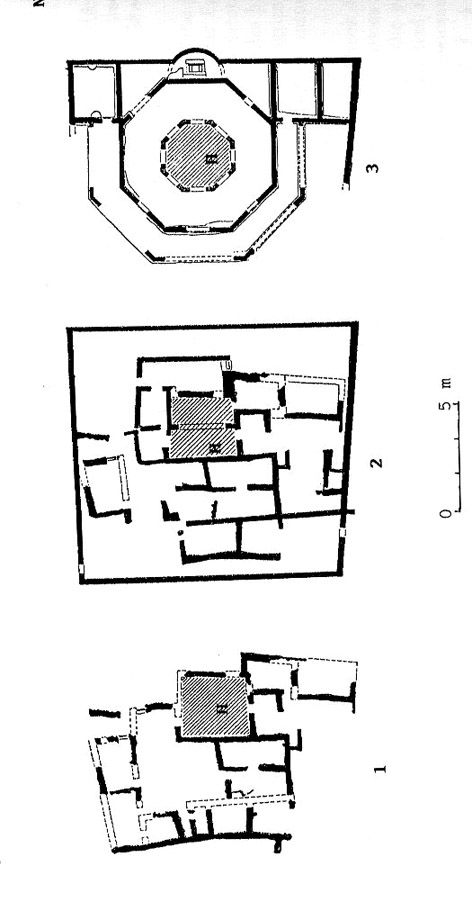
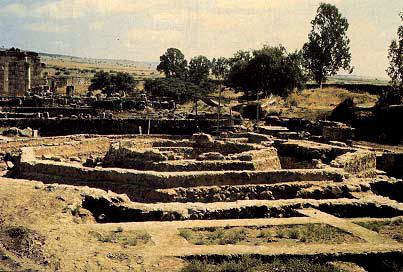
The walls had been replastered at least three times, the first coating dated early first century, and on the walls were "scores of graffiti" in Aramaic, Greek, Hebrew, Latin and Syriac, as well as crosses and an image of a boat. The house had become an early church. A pilgrim called Egeria of Aetheria, wrote around 382AD, "the house of the chief of the apostles has been turned into a church." It was Peter's house - where Jesus, Mary Magdalene, Peter and the other disciples had lived.
Jesus and his disciples had started their own "church" in Peter's house, that continued as such after the crucifixion.
All this archeological research confirms my ideas of the everyday life of Jesus and Mary Magdalene, with their apostles and friends; John, James, Peter, Andrew, Philip from Bethsaida, Matthew, Jairus, Herod Philip and Petronius. They moved around, yes, but all the towns concerned, Sepphoris (where lived Jesus's grandparents), Nazareth where he was born, Migdal where Mary Magdalene came from, Cana where the wedding was, Chorazin where once again Jesus fell out with the Pharisees, and Capernaum, the centre of Jesus's operations, were only a few miles from each other, a hard hour's walking, or a ride by horseback, by donkey, by camel, or in a cart.
They were educated middle-class or business people. Peter was born in Bethsaida; he and Andrew had another house there, possibly the recently-excavated "Fisherman's House." Jesus liked Bethsaida, which was out of Herod Antipas's territory, and was friendly with Herod's brother Phillip. The village is now situated some two miles inland; the shore moved during an earthquake and the Sea of Galilee silted up. It was probably marshy 2,000 years ago, which explains the story in the Bible about Jesus walking on the water.
And for Jesus the flagstoned highway of the Roman Via Maris ("sea road") was just yards away if he wanted rapid travel, and his friend Matthew controlled the toll-gate between the territory of Herod Antipas and Herod Philip. . . .
To find the next article in this series about the life of Mary and Jesus in the Holy Land, click here.
Inscrivez-vous au site
Soyez prévenu par email des prochaines mises à jour
Rejoignez les 260 autres membres

